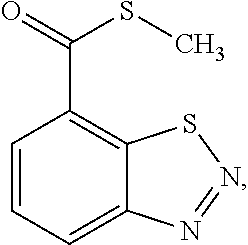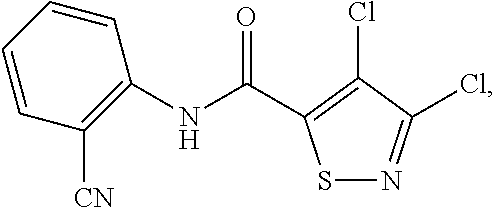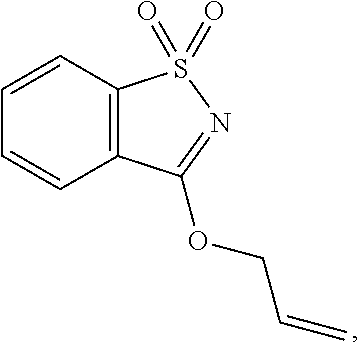Use of combinations comprising host defense inducers and biological control agents for controlling bacterial harmful organisms in useful plants
a technology of biological control agent and host defense inducer, which is applied in the field of combination comprising host defense inducer and biological control agent for controlling bacterial harmful organisms in useful plants, can solve the problems of large number of bacterioses in combination, considerable economic losses, and no combination in these patent applications
- Summary
- Abstract
- Description
- Claims
- Application Information
AI Technical Summary
Benefits of technology
Problems solved by technology
Method used
Image
Examples
example 1
[0272]The advanced anti-bacterial activity of the active compound combinations according to the invention is evident from the example below. While the individual active compounds exhibit weaknesses with regard to the anti-bacterial activity, the combinations have an activity which exceeds a simple addition of activities.
[0273]A synergistic effect of bactericides is always present when the anti-bacterial activity of the active compound combinations exceeds the total of the activities of the active compounds when applied individually. The expected activity for a given combination of two active compounds can be calculated as indicated above,
[0274]The degree of efficacy, expressed in % is denoted. 0% means an efficacy which corresponds to that of the control while an efficacy of 100% means that no disease is observed.
[0275]If the actual anti-bacterial activity exceeds the calculated value, then the activity of the combination is superadditive, i.e. a synergistic effect exists. In this c...
PUM
 Login to View More
Login to View More Abstract
Description
Claims
Application Information
 Login to View More
Login to View More - R&D
- Intellectual Property
- Life Sciences
- Materials
- Tech Scout
- Unparalleled Data Quality
- Higher Quality Content
- 60% Fewer Hallucinations
Browse by: Latest US Patents, China's latest patents, Technical Efficacy Thesaurus, Application Domain, Technology Topic, Popular Technical Reports.
© 2025 PatSnap. All rights reserved.Legal|Privacy policy|Modern Slavery Act Transparency Statement|Sitemap|About US| Contact US: help@patsnap.com



